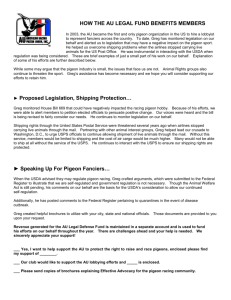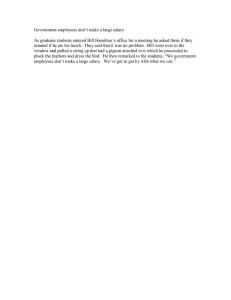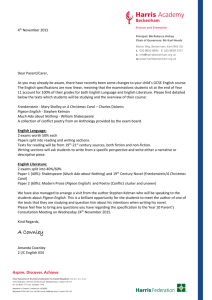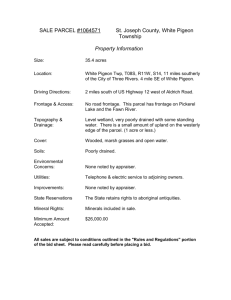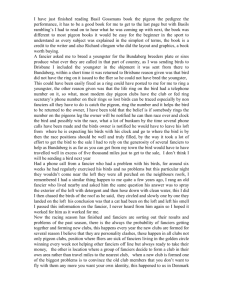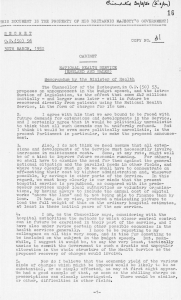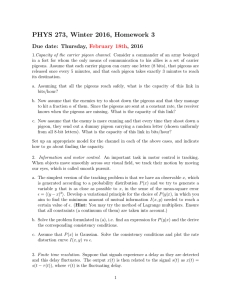pigeon fanciers society of nsw inc - Pigeon Fancier Society of NSW
advertisement
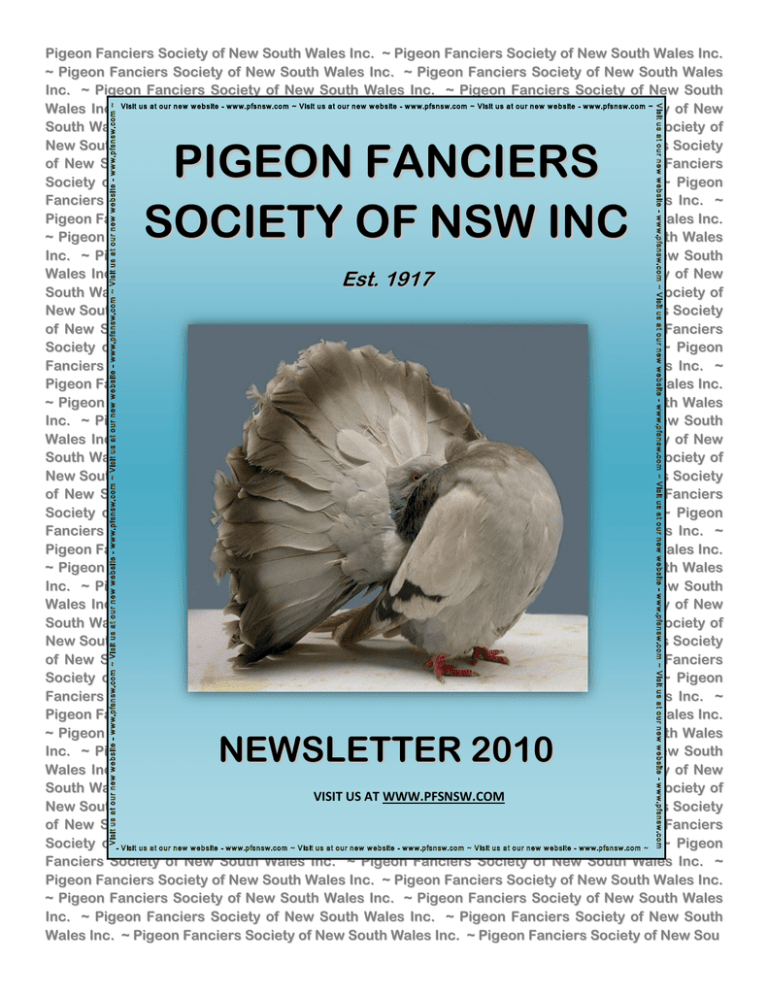
Pigeon Fanciers Society of New South Wales Inc. ~ Pigeon Fanciers Society of New South Wales Inc. ~ Pigeon Fanciers Society of New South Wales Inc. ~ Pigeon Fanciers Society of New South Wales Inc. ~ Pigeon Fanciers Society of New South Wales Inc. ~ Pigeon Fanciers Society of New South Wales Inc. ~ Pigeon Fanciers Society of New South Wales Inc. ~ Pigeon Fanciers Society of New South Wales Inc. ~ Pigeon Fanciers Society of New South Wales Inc. ~ Pigeon Fanciers Society of New South Wales Inc. ~ Pigeon Fanciers Society of New South Wales Inc. ~ Pigeon Fanciers Society of New South Wales Inc. ~ Pigeon Fanciers Society of New South Wales Inc. ~ Pigeon Fanciers Society of New South Wales Inc. ~ Pigeon Fanciers Society of New South Wales Inc. ~ Pigeon Fanciers Society of New South Wales Inc. ~ Pigeon Fanciers Society of New South Wales Inc. ~ Pigeon Fanciers Society of New South Wales Inc. ~ Pigeon Fanciers Society of New South Wales Inc. ~ Pigeon Fanciers Society of New South Wales Inc. ~ Pigeon Fanciers Society of New South Wales Inc. ~ Pigeon Fanciers Society of New South Wales Inc. ~ Pigeon Fanciers Society of New South Wales Inc. ~ Pigeon Fanciers Society of New South Wales Inc. ~ Pigeon Fanciers Society of New Est. 1917 South Wales Inc. ~ Pigeon Fanciers Society of New South Wales Inc. ~ Pigeon Fanciers Society of New South Wales Inc. ~ Pigeon Fanciers Society of New South Wales Inc. ~ Pigeon Fanciers Society of New South Wales Inc. ~ Pigeon Fanciers Society of New South Wales Inc. ~ Pigeon Fanciers Society of New South Wales Inc. ~ Pigeon Fanciers Society of New South Wales Inc. ~ Pigeon Fanciers Society of New South Wales Inc. ~ Pigeon Fanciers Society of New South Wales Inc. ~ Pigeon Fanciers Society of New South Wales Inc. ~ Pigeon Fanciers Society of New South Wales Inc. ~ Pigeon Fanciers Society of New South Wales Inc. ~ Pigeon Fanciers Society of New South Wales Inc. ~ Pigeon Fanciers Society of New South Wales Inc. ~ Pigeon Fanciers Society of New South Wales Inc. ~ Pigeon Fanciers Society of New South Wales Inc. ~ Pigeon Fanciers Society of New South Wales Inc. ~ Pigeon Fanciers Society of New South Wales Inc. ~ Pigeon Fanciers Society of New South Wales Inc. ~ Pigeon Fanciers Society of New South Wales Inc. ~ Pigeon Fanciers Society of New South Wales Inc. ~ Pigeon Fanciers Society of New South Wales Inc. ~ Pigeon Fanciers Society of New South Wales Inc. ~ Pigeon Fanciers Society of New South Wales Inc. ~ Pigeon Fanciers Society of New South Wales Inc. ~ Pigeon Fanciers Society of New South Wales Inc. ~ Pigeon Fanciers Society of New South Wales Inc. ~ Pigeon Fanciers Society of New South Wales Inc. ~ Pigeon Fanciers Society of New South Wales Inc. ~ Pigeon Fanciers Society of New South Wales Inc. ~ Pigeon Fanciers Society of New South Wales Inc. ~ Pigeon Fanciers Society of New South Wales Inc. ~ Pigeon Fanciers Society of New South Wales Inc. ~ Pigeon Fanciers Society of New South Wales Inc. ~ Pigeon Fanciers Society of New South Wales Inc. ~ Pigeon Fanciers Society of New South Wales Inc. ~ Pigeon Fanciers Society of New South Wales Inc. ~ Pigeon Fanciers Society of New South Wales Inc. ~ Pigeon Fanciers Society of New South Wales Inc. ~ Pigeon Fanciers Society of New South Wales Inc. ~ Pigeon Fanciers Society of New South Wales Inc. ~ Pigeon Fanciers Society of New South Wales Inc. ~ Pigeon Fanciers Society of New South Wales Inc. ~ Pigeon Fanciers Society of New South Wales Inc. ~ Pigeon Fanciers Society of New South Wales Inc. ~ Pigeon Fanciers Society of New South Wales Inc. ~ Pigeon Fanciers Society of New South Wales Inc. ~ Pigeon Fanciers Society of New South Wales Inc. ~ Pigeon Fanciers Society of New South Wales Inc. ~ Pigeon Fanciers Society of New South Wales Inc. ~ Pigeon Fanciers Society of New South Wales Inc. ~ Pigeon Fanciers Society of New South Wales Inc. ~ Pigeon Fanciers Society of VISIT US AT WWW.PFSNSW.COM New South Wales Inc. ~ Pigeon Fanciers Society of New South Wales Inc. ~ Pigeon Fanciers Society of New South Wales Inc. ~ Pigeon Fanciers Society of New South Wales Inc. ~ Pigeon Fanciers Society of New South Wales Inc. ~ Pigeon Fanciers Society of New South Wales Inc. ~ Pigeon Fanciers Society of New South Wales Inc. ~ Pigeon Fanciers Society of New South Wales Inc. ~ Pigeon Fanciers Society of New South Wales Inc. ~ Pigeon Fanciers Society of New South Wales Inc. ~ Pigeon Fanciers Society of New South Wales Inc. ~ Pigeon Fanciers Society of New South Wales Inc. ~ Pigeon Fanciers Society of New South Wales Inc. ~ Pigeon Fanciers Society of New South Wales Inc. ~ Pigeon Fanciers Society of New South Wales Inc. ~ Pigeon Fanciers Society of New Sou PIGEON FANCIERS SOCIETY OF NSW INC NEWSLETTER 2010 THE PIGEON FANCIERS SOCIETY OF NSW SOUTH WALES INC. PATRONS: DES SANDERS, JOHN HANSON PRESIDENT: ROBERT WEEKES EDITOR OF NEWSLETTER: P.O.BOX 28, TOWN CENTRE, MT DRUITT NSW 2770 PHONE: (02) 9628-1081 Email: mweekes@bigpond.net.au VICE PRESIDENT: WALTER HITCHELL AND DES SANDERS SECRETARY: WALTER HITCHELL (OAM) 72 NORTH STREET, KATOOMBA NSW 2780 PHONE: 4782-2292 Email: hitchell@bigpond.net.au RING SECRETARY/ TONY DESSMANN MEMBERSHIP COORDINATOR 8 NORTH AVENUE, ROSSMORE NSW 2171 PHONE: (02) 9606-5619 Email: tdessmann@vtown.com.au TREASURER: JIM MACKAY – PHONE: (02) 4621-1188 ANNUAL SHOW SECRETARY: CATHERINE WEEKES - P.O.BOX 28, TOWN CENTRE, MT DRUITT NSW 2770 PHONE: (02) 9628-1081 Email: mweekes@bigpond.net.au YOUNG BIRD SECRETARY: STEVE CUMMINS PHONE: 0414490184 Email: cummins5@bigpond.com.au AWARDS COMMITTEE: DES SANDERS, JOHN HANSON, ROBERT WEEKES PAVILION MANAGERS: DAVID GRAHAM, TONY DESSMANN PUBLICITY OFFICER: LISA WEEKES CHIEF STEWARD: GUS GORTON MEMBERSHIP PARTICULARS: NEW MEMBERS - $20.00 JUNIOR’S (UNDER 16’S) - $5.00 RENEWAL – PENSIONER - $8.00 RENEWAL – SENIOR & COMBINED FAMILY RATE - $15.00 st Please note that the renewal of membership falls due on the 1 July each year. Cheques and money orders must be made payable to the PFS of NSW Inc. and can be mailed to the Membership Co-Coordinator, TONY DESSMANN, address as indicated above, New Membership enquires and membership forms can be obtained from the secretary, either show secretaries or from the PFS website – www.pfsnsw.com CLUB MEETINGS: ARE CONDUCTED ON THE THIRD TUESDAY OF EACH MONTH, COMMENCING AT 7.3OPM, VENUE BEING THE PIGEON & POULTRY PAVILION, FAIRFIELD SHOWGROUNDS, SMITHFIELD RD, FAIRFIELD. VISITORS ARE WELCOME. CLUBS NEWSLETTER IS PUBLISHED FOUR TIMES A YEAR; THE EDITOR INVITES SUBMISSIONS AND ARTICLES FROM MEMBERS, INCLUDING REPORTS, ESPECIALLY FROM COUNTRY AREAS. RINGS: PIGEON RINGS CAN BE PURCHASED FROM OUR RING SECRTARY FOR $0.45 EACH, ONLY AVAILABLE IN LOTS OF TEN. (COST $4.50 FOR TEN RINGS) PLUS $2.50 POSTAGE. THE VIEWS AND OPINIONS HEREIN ARE NOT NECESSARILY THOSE OF THE PFS OF NSW INC., IT’S NEITHER COMMITTEE NOR THE EDITOR. 2|W W W . P F S N S W . C O M I hope to see as many of you as possible at one or two our clubs shows. Don’t forget that this year is an election year for our state committee for the Australian National Pigeon Association (ANPA). Do not forget to get your nominations in early if you are an ANPA member. Your current committee is Vice President – Alan Makin, Committee – Bob Weekes, Walter Hitchell. EDITORS DESK Welcome to our first newsletter for 2010. I hope everyone had a safe and happy holiday season and I hope also you had a good breeding season with your birds. This year our club has the services of John Heppner of the USA for our Young Bird show from what I have been told this will be John’s last trip to Australia. John will only be judging two shows in Australia. The PFS Young Bird show and then he will going to Western Australia with his good mate Max Healy to judge the PBE of WA show. Then will be having our Eastern Classic Annual Show in June, we have a good lineup of interstate judges plus the services from USA – John DeCarlo Jnr. and from Canada Bob Pilcher, which will make for a good show. Lofts visits - If you would like your loft visited and put in the newsletter, please contact me and I will arrange for your loft visited. Catch you all later – Bob Weekes P.S – Thank you Gary for your loft visit reports PIGEON JOKES…… Q. Did you hear about the man who became a millionaire with one homing pigeon? A. He sold it for a dollar and it kept coming home a million times! Funny Pigeon Story The baby pigeon complained to his mother before flying a long distance, 'I can't make it, I'll get too tired.' His mother replied, 'Don't worry, I'll tie a piece of string to one of your legs and the other end to mine.' The baby started to cry. 'What's wrong?' asked the mother sympathetically. 'I don't want to end up being pigeon towed WEST GUILDFORD CAKES 227 Fowler Rd, West Guildford Contact Details Ph: (02) 9632 2793 Pies, Pasties, Sausage Rolls, Cakes, Sandwiches, Parties Catered For 3|W W W . P F S N S W . C O M Below: Gary Edwards with Bryan Briggs standing outside Bryans lofts. PFS LOFT REPORTER Gary Edwards aka Twinkle Toes Twinkle Toes goes and visits Bryan Briggs in Albury Wodonga. Albury Wodonga is situated on the border of New South Wales and Victoria. Population of 100000 people but only two fanciers located there, how times are changing. On the 21st of November, we made it to Albury; it was Bryans 70th Birthday weekend. On the Saturday night a few of us went out, and celebrated enjoyable Night. I even managed to have a few dances. On the Sunday I looked over Bryans birds. He has a few lofts - very neat and tidy. He would make any fanciers wife happy, clean lawns and most of all clean cages and surroundings. (That's why Elsa is happy). Breeds: Bryan has many breeds, about 6 breeds. Chinese Owls, Old Dutch Capuchins, Old German owls, Egyptian Swifts, Taganroger Rollers and Old German Owls. He has built up a real team in blue bars, blue checker, cream bars, mealy, silver, red, yellow checker and black. With some outstanding birds, they are very quite breed of pigeon, one can pick them up, put them in your hand and they will stay then put, them back where they were. A very clean breed of pigeon. With the best stud in Australia. Above: Bryan Briggs inside his lofts, checking out his birds. THE PFS NOW STOCKS A LARGE RANGE OF MINERAL ENERGY HEALTH PRODUCTS – PRODUCTS AVAILABLE AT MEETINGS, SHOWS ETC.. DISCOUNT PRICES FOR PFS MEMBERS! 4|W W W . P F S N S W . C O M Chinese owls there were a lot of yellow birds. Very smooth, good pantaloons, wide chest and not the size of a sparrow. The standard says small, compact and cobby. He also had a few whites; Bryan would have the best whites in Australia I believe. Bryan Briggs Birds and Lofts – Below: Bryans team of Taganroger Rollers Other breeds - Fairy swallows, Bryan just breeds 100s of these breeds. Egyptian swifts, he had 6 youngsters in the cage I believe he sold the birds already, Taganroger Rollers are an eye catching breed nothing like a roller! Slightly a small fantail, another quite breed of pigeon. He works on around 40 birds of this breed. It would be classed as a rare breed. The country boys are lucky tp pay a lot less for their feed than the city boys about half the price! I enjoyed the weekend down in Albury, it’s great to catch up to my mate Bryan and his wonderful lady friend Elsa, Well enjoy the story and look forward to Bryan come to Sydney to show this year. Enjoy the photos also. Twinkle toes, Garry Edwards 5|W W W . P F S N S W . C O M TWINKLE TOES GOES VISITING ANOTHER P.F.S FELLOW FANCIER Well its Australia Day temperature around 35 degrees and I am off to Frenches Forest to pay a visit to Hamed Mostafa pigeon loft. Above: Hamed Mostafa with his Egyptian Swifts. Frenches Forest is located on the northern side of Sydney. Hamed house backs onto a bush reserve which is ideal for pigeons with no neighbour problems. Hamed an Aussie with Egyptian background, that is why he into Egyptian swifts. His birds came from another well known Egyptian swift fancier, Peter Darmanin. The only difference Hamed birds are producing crest like you see in one of the photos I have taken. We spent a lot of time talking about back skull, eye cere, eyes, and body. The Egyptian swift breeders love colour, there is names for them all. One only has to go onto goggle type in hammed loft, with links to other fanciers as well as Peter visit to Egypt. Other web sites you can visit are pigeonnews.com, Picasa web album. And a must our web www.pfsnsw.com 6|W W W . P F S N S W . C O M Hamed loves to fly his birds and like all fanciers he has to many birds. This happens after breeding season. Other breeds Hamed has are frills and a few racing pigeons used as feeders. I spent one and half hours in his loft. One thing I will say Hamed is a good cook, Good snacks while watching Peter winning Egyptian Swift from the last show. And lastly looking some Old German and Chinese owls. Well enjoy a couple of photos of Hammed and his birds. And thank you Hamed for inviting me to visit your loft and the warm welcome you and your wife extended to me. Twinkle toes…… Garry Edwards. Above: Hamed outside his pigeon loft with one of his potential winners. The Egyptian Swift is a breed of fancy pigeon developed over many years of selective breeding. Egyptian Swifts along with other varieties of domesticated pigeons are all descendants from the Rock Pigeon (Columba livia). The breed is known for its long wings and tail and its short beak. Suttons Produce \ 41 Melbourne Street, Oxley Park 2760 9623-1611 Above: Hamed Mostafa’s Champion Birds from the PFS Annual Pigeon show 2009. We sell Pigeon Mix, Parrot Mix, Finch Mix, Rabbit Mix, Guinea Pig Mix, Horse Mix and much more….. PROUD SUPPORTER OF THE PFS NSW INC. 7|W W W . P F S N S W . C O M DEALING WITH INFERTILITY By Dr. David Marx How long is a pigeon fertile? Fertility in pigeons is, more often than not, a factor of heredity. You will see families where cocks are fertile up to 18 years of age. Probably, though, the average pigeon’s fertility is limited to 10-14 years. Hens usually lay until they are about this age, but some lay into their 14th or 15th years. Others stop at 7 or 8 years. The first sign that hens are “drying up” is when they start laying only singles. As long as a hen lays eggs, she is fertile in 90% of the cases. There are some occasions, however, when hens do not have a good germ on the egg or they have bacteria incorporated in the yolk which can quickly kill the embryo. Here, the hen is fertile but for other reasons the eggs are not viable.; Older hens tend to lay eggs with chalky shells. It is best to throw these away because they usually collapse before term. If you have an egg shell that is just rough but no chalky, it is usually a viable egg. The roughness is just a defect in the hen’s calcium producing mechanism. It may just be a peculiarity of that hen, but the genetic composition of the embryo is not affected, so do not reject the egg or its youngster on that basis. A calcium supplement is about the only thing you can do to correct the problem. When a hen does quit laying, there is little you can do to resurrect her fertility. The only hope here is that if a low grade oviduct infection is causing the inability to lay, it can be treated with an appropriate antibiotic for 10-14 days, then she can try again. With cocks, though, there are several things that can be tried to return his sex drive and fertility. Remember, fertility and sex drive are two different things. A cock can have sex drive and be infertile. Fertility is based on a viable sperm count as opposed to low sperm counts or poor quality sperm. The higher the count the more likely he will fertilize his hen’s eggs. You must also realize that some cocks don’t go all the way through the sex act. Whether they have arthritis or some functional problem, they just stop short of a full “cloacae kiss”. I have seen some cases where they just kind of swing the tail half way under and they don’t go all the way. They can’t reproduce for that reason, not that they are truly infertile. Most pigeons are fertile all year round. The sex organs are actually not as active in the winter because hormones are tied to the number of daylight hours. Pigeons also don’t produce as many hormones which cause the sex drive itself. Light actually has an effect on the pineal gland which governs a lot of hormones that govern other hormones. It does have an effect on the desire to mate. In the winter, with its shorter days, cocks don’t produce as many sperm as in the summer with its longer days. One positive thing you can do when you find diminishing fertility is to increase daylight hours using artificial light in the winter time. This frequently will cause marginally infertile pigeons to become fertile. There are no secret rays in the sun that increase fertility as is commonly believed. It can be done with artificial light. How many hours of sunlight???? I don’t know the answer. All I know is that when the daylight hours start increasing, the sex organs become more active. People talk about trimming the vent feathers and the tail feathers to increase sexual contact. Birds do not increase their feather abundance with age. Individual pigeons may have a lot of vent feathers, but it is questionable that such growth interferes with the sex act. In my own mind I think that is a very rare thing. I think people trim the vent feathers to do something and in the cases where it appears to work, the bird would probably have been fertile the next round anyway due to longer daylight hours. It is definitely not going to hurt anything to try it, but realize that the number of cases in which it appears to work are very few. What about trimming an inch off the tail feathers??? This is said to be based on an assumption that the quills get harder with age and, therefore, interferes with contact. I do not believe that this is true. In fact, pigeons swing the tail to the side enough in mating to where I don’t see it being a problem. Pulling a few tail feathers is also reported to help restore fertility. This practice is questionable, but it can’t hurt to try. It is frequently the practice, when a cock doesn’t fertile anymore, to go ahead and foster a fertile round or two. It is believed that the hormonal changes in the bird which are associated with rearing young have a beneficial affect on returning fertility. This can be beneficial, but results can also be due to the factor of longer daylight hours which coincide with the later breeding season attempts, but definitely there is a rhythm to hormone cycles of reproduction. 8|W W W . P F S N S W . C O M If you can get them going through that cycle again, it may be helpful. Feeding and the hormonal changes may indeed have a stimulating affect on the gonads. When it does work, it is probably a combination of breeding later in the year when the daylight hours are longer with the hormonal changes also stimulating the gonads. This product is commonly available as HCG (Human Chorionic Gonadotropin). Gonadotrpin is given by injection, at 0.2 cc subcutaneous. Injections are repeated every other day for a series of three injections. The process should be repeated monthly until one tires of trying. The reconstituted product will keep for one month in the refrigerator. Its life can be extended by freezing, but it is unknown how long it will remain potent, especially after thawing and refreezing. The success rate, using Gonadotropin, will be in the 20-30% range, though, so don’t expect too many miracles. There is also some truth in the saying “use it or lose it” so it is advisable to keep old cocks mated year round. I think when they become inactive, sometimes it is harder for them to become active again. One only needs to put a hen with him every few days, allowing him to top her and then removing her. By Robert J. Mangile As for medical treatments to restore fertility, anabolic steroids were touted years ago. They have proved uniformly unsuccessful in dealing with the infertility problem. The only way that they may help is by improving a cock’s vigor if he is too feeble to perform a good mating act. They don’t increase sperm production, only his sex drive. These drugs may actually decrease sperm production. The only drug treatment that has shown some promise is the use of Gonadotropin. Gonadotropin actually increases sperm count as well as sex drive. When it doesn’t work, you have a gonad that can’t respond to it and so all the hormones in the world won’t make it produce more sperm. FOOLING AROUND WITH FEATHERS Ask the average person to start counting flight feathers on a pigeon and almost surely they would start counting from the largest feather at the tip of the wing. Erroneously, calling it the first flight and increasing the count as they move toward the body of the bird. A system for naming the various structural aspects and the numbering of feather positions has already been established by the scientific community. In a two volume book entitled "Avian Anatomy Integument", details of feathers, primarily from the chicken, turkey, duck, coturnix and the common pigeon are discussed in great depth. A book more accessible to the average pigeon fanciers is "The Pigeon" by W.M. Levi, which gives much information on pigeon feathers. A proper method of counting remiges (flights) and rectrices (tail feathers) can be seen in the sketch in Figure #1. Notice that the flight on the end of the wing is the tenth... not the first flight. The numbering starts where the primaries and secondaries meet; therefore, the first primary and the first secondary are in the middle of the expanded wing. The usual number of primaries and tail feathers (in the wildtype) is ten and twelve respectively. Occasionally, fewer or extra flights and tail feathers may be found. 9|W W W . P F S N S W . C O M The Fantail pigeon always has extra tail feathers. The total number of feathers found on a bird species varies with the individual and according to which types, of feathers are counted. A total feather count for the pigeon was not listed in "Avian Anatomy Integument"; but, some other bird species were. One chart lists the Mourning Dove = 2,635, House Sparrow = 1,359 and the Rubythroated Hummingbird = 940. Other counts have the Laughing Dove, (Streptopelia senegalensis), with 4,210; Green-winged Teal 11,450 and the Whistling Swan 25,216. Chicken breeds varied, from roughly 6,000 to 9,000. In addition to the number of feathers, there are several different types of feather. The hair-like feathers found on a plucked chicken are called 'filoplumes'. The stiff 'bristle' feathers found primarily on the heads of many birds (owls, turkeys and others; but, not on pigeons) and the 'down' feathers (of which one type called 'natal down' is found on young pigeons) are among the various feather types. But, the predominant feathers on a bird's body are called 'contour' feathers. There are the two types of contour feathers most familiar to pigeon fanciers. They are the typical body feathers and another type which includes the flights (remiges) and tail feathers (rectrices). The structure of contour feathers, including the remiges and rectrices, has been well studied and the various structural aspects have been assigned names. The sketch in Figure #2 identifies some of them. The hollow portion of the feather shaft extending beneath the skin is called the 'calamus'. The solid portion that bears the barbs is called the 'rachis', which usually curves downward and inward. Both remiges and rectrices overlap so that when closed the outermost feathers fold beneath the adjacent feather and in the case of the flights, are closest to the body. The sketch in Figure #3, depicting a cross section view of a contour feather from a Leghorn chicken, shows that the rachis is generally four-sided and slightly wider than thick and has a depression on the under surface called the 'ventral groove'. 'Barbs' grow from the convex sides of the rachis forming the vanes. The outer 'web' of the 'vane' is always narrower than the inner (on flights) and this feature allows determination of whether a flight is either from the left or right side of the bird. The study of feathers is really a complex and tedious task. There are many specific details not touched upon in this brief article. Beyond the use of a hand held magnifying glass, most of us cannot observe a highly magnified view of a feather. However, you might find some books that have good sketches, drawings and magnified pictures. Perhaps you may be inspired to extend your knowledge beyond what the 'feather readers' of the pigeon fancy have professed to be the final truth. A glossary has been included below to assist the reader. 10 | W W W . P F S N S W . C O M BREEDING... by Davey Warrener First and foremost in your choice of breeding stock should be quality rather than quantity. Research is the key... you need birds which are suitable for the area in which you intend to fly them. So, if possible get birds from a local flyer who is doing well. This gives you the advantage of being able to watch the birds perform before getting them. You will also have someone on hand to advise you if things are not going to plan. Getting the best birds you can and getting them from a flyer who is willing to help with advice, can and will save you a lot of hard work. Once you have your breeders in the loft you must have them used to having you near them. Cleanliness is essential, so you will be in there several times a day cleaning the loft, nestbowls, drinkers, feeders, perches, etc... as well as feeding and replacing minerals and grit. The last thing that you want are birds flying wild in the section while you are tending them. My method is to lock in the pairs until the 1st eggs are laid to ensure the parentage of the young birds. I let each pair out twice a day to get used to locating their own cages once the first eggs are laid. I let them out 2 pairs at a time, then 3 pairs and so on. It does not take long for them to get to know their own cages. Acccess to a flight or aviary is a good idea, as it will give the birds a chance to bathe and so help with the hatching of the eggs. Overcrowding causes more trouble than it's worth, with birds fighting, eggs getting broken or deserted and an invitation to disease. So no more than 6 to 8 pairs in a 6X6 foot section with plenty of perches should give enough room. White Doves r Us We release pure white homing pigeons to symbolise the white dove at weddings,Funerals and all special occasions. www.whitedovesrus.com For All Enquiry's 0404886321 - 0414308934 - 96689208 whitedovesrus@iprimus.com.au Each breeding cage needs to be large enough to comfortably accomodate two nestbowls because the 2nd round of eggs are often laid while the 1st round of young birds are still in the nest. Cages around 2 feet deep, 2 feet long and 18 inches high should be large enough. The fronts can be set back 4 inches to leave a shelf for extra perching or for feeders and drinkers if the birds are locked in. 11 | W W W . P F S N S W . C O M TURNHOUT – BELGIUM SHOW – 20-22 NOVEMBER 2009 Winners from around the world Show Racer Indigo Chequer Brunner Pouter Yellow Jacobin – Almond Show Racer Chequer Thuringen Monk Blue-White Modena – Magnani Show Homer Red Pied Reversewing Pouter - Blue Saxon – Crested – Black white barred 12 | W W W . P F S N S W . C O M COMING EVENTS – SHOW DATES NOT TO BE MISSED 1 APRIL - 14 APRIL 2010 Sydney Royal Easter Show http://www.sydneyroyalshows.com.au/sydneyroyalc omps/poultrypigeon/index.html 17 APRIL 2010 Queensland Pigeon Fanciers Society Autumn Lawn Show, venue Caboolture Showgrounds. Contact: Werner Zimmer wernerz@netspace.net.au 1-2 MAY 2010 Summerland Pigeon Club Annual Show (NSW) Lismore Showgrounds Contact Ricky Maslen (02) 6629 3159. 15 MAY 2010 Riverina Pigeon Society Annual at Wagga Wagga, NSW. 16 MAY 2010 Wauchope Pigeon Show Wauchope showgrounds, NSW Contact: Show Secretary – Kevin Miller 65852723 29-30 MAY 2010 Pigeon Fanciers Society of NSW Premier Young Bird Show at Fairfield Showgrounds. Contact: Steven Cummins 0414490184 or (02) 4730 4996. 29-30 MAY 2010 Queensland State Show hosted by the Ipswich Pigeon Specialist Club at Ipswich Showgrounds. Contact: John Wiseman 07 54643784 or john224@bigpond.com Includes Northern Modena Classic (judge David Lewis, SA). Contact: Warren Osborne 07 3355 9921 or warrenosborne@optusnet.com.au 13 JUNE 210 The Australian Pouter and Cropper Club Annual Show Fairfield Showgrounds. Contact: Mark Wilson 02 9570 5863 mkkewil@tpg.com.au 13-14 JUNE 2010 First Australian Modena show (IMC Affiliated) Fairfield Showgrounds Judges: Rick Barker (USA) and Brent Marshall (NZ). Contact: Warren Osborne 07 3355 9921 or warrenosborne@optusnet.com.au 19-20 JUNE 2010 Hunter Valley All Variety Pigeon Society Annual Show at Maitland Showgrounds, NSW. Contact: Allan Haigh 02 4952 7108. 26-27 JUNE 2010 Pigeon Fanciers Society of NSW Eastern Classic at Fairfield Showgrounds. Contact: Catherine Weekes (02) 9628 1081 mweekes@bigpond.net.au 4 JUNE 2010 Geelong and Districts All Breeds Pigeon Club Annual Show Geelong Showgrounds. Contact: Stephen Ferry ferryfamily@iprimus.com.au 4 JULY 2010 Ipswich Pigeon Specialist Club 70th Annual Show at Ipswich Showgrounds. Contact: John Wiseman 07 54643784 or john224@bigpond.com Includes Modena Club of Queensland Annual Show. Contact: Warren Osborne 07 3355 9921 or warrenosborne@optusnet.com.au 16-18 JULY 2010 ANPA 28th National Show, hosted by the Victorian Show Pigeon Federation, venue Melbourne Showgrounds Contact: Michael Spadoni spudxy@bigpond.com Mobile: 0402 078 695. 31 JULY 210 QPFS Annual Show at Caboolture Showgrounds. Contact: Werner Zimmer wernerz@netspace.net.au 13 | W W W . P F S N S W . C O M THE 36TH GERMAN INTERNATIONAL GIMPEL/ARCHANGEL SHOW 14-15 November 2009 – Riedligen, Baden-Wurttberg Altogether almost 1.000 Gimpels, with exhibitors and judges from as far as I can gather, Germany, Denmark, France, Belgium, Holland (sorry if I have missed a Country out!). In all a very impresssive Show in a light and Airy Hall and so much Color, especially when the November sun shone through the windows and hit the cages, a real spectacle! 23 gimpels achieving the top 97 grade. . Above: Best in show – copper blue wing, white flight barless Above & Below: Goldwing Gimpel Above: copper bluewing archangels 14 | W W W . P F S N S W . C O M
